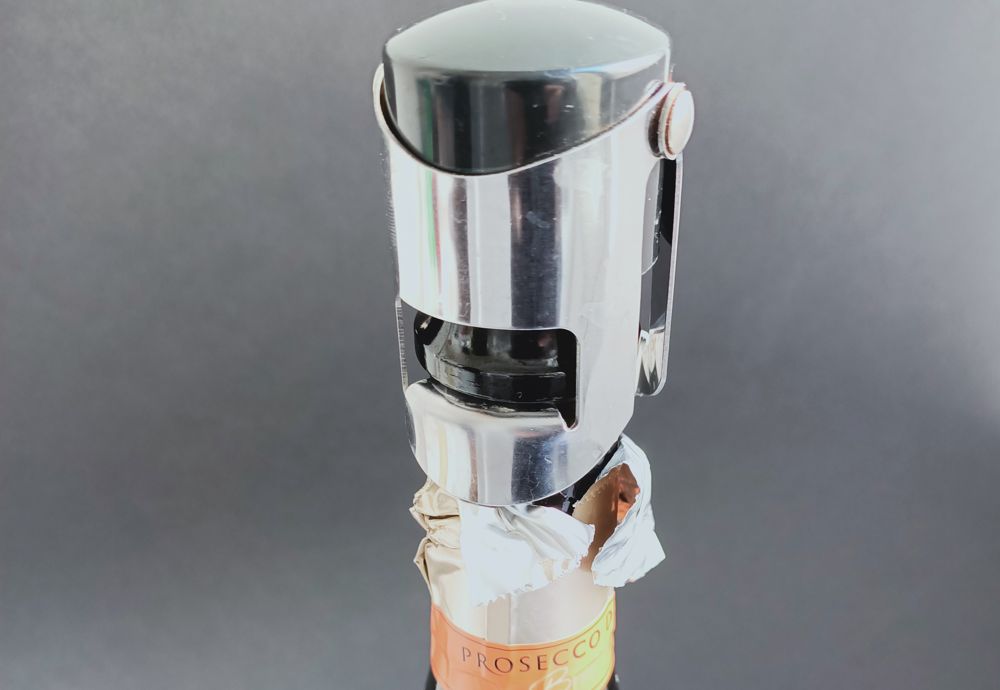In this article, you will learn how to open Champagne safely and quietly.

Popping Champagne corks may conjure images of race car drivers celebrating with Champagne spraying everywhere, but for us mere mortals the idea of expensive Champagne on our furniture and all over the floor instead of in our glasses is not what we are aiming for.
Contents
Why it’s important to open Champagne correctly
Incorrectly opened Champagne doesn’t just result in a lot of spilt Champagne, it can also be dangerous.
Flying corks can cause real damage, so it is worth learning some simple techniques that will mean perfectly opened Champagne every time.
The method described below can also be applied for sparkling wines, such as Crémant, Cava and Prosecco.
Serving temperature for Champagne
Serve Champagne and other sparkling wines well chilled (6-10°C or 43-50°F).
There is considerable pressure in a bottle of Champagne or sparkling wine.
Ensure it is chilled to the correct temperature to help to reduce the pressure.
What glass to serve Champagne in
The delicate bubbles and aromas of champagne are best enjoyed when served in the right glass.
Serve Champagne in tall, flute-shaped glasses to preserve the bubbles and concentrate the aromas.

How to pour a glass of Champagne
To pour champagne, hold the glass at a slight angle to prevent excessive foaming.
Pour gently down the side of the glass to minimize effervescence loss.
Aim to fill each glass to about two-thirds full, allowing ample room for swirling and releasing the wine’s bouquet.
Avoid overfilling the glass to prevent spillage.

Step-by-step guide for how to open Champagne
Even when chilled correctly, it is possible for a Champagne or sparkling wine cork to pop violently from the bottle injuring someone.
So, it is important to take care and follow some common-sense guidelines.
In my experience, some corks are ready to pop out with little or no help, while others require a great deal of coaxing.
That said, I find as long as I follow the steps outlined below, the cork can be removed safely and with no spillage:
- Remove the foil.
- Hold the cork in place with your thumb and twist to loosen the wire cage, but don’t remove it.
- Tilt the bottle at an angle (approx. 30 °). Continue to grip the cork and use the other hand to hold the base of the bottle.
- Turn the bottle, not the cork.
- Resist the tendency of the cork to fly out, and ease it slowly out of the bottle as you twist.
- The gas pressure release should be gentle – a quiet pop rather than an explosion and a flying cork.
Keeping the bubbles in your bubbly after opening
In the unlikely event of leftover Champagne, there are some simple tips for how to keep the fizz for longer.

Champagne or sparkling wine cocktails
Champagne cocktails are a great way to add interesting flavors, glamor and make your bubbly go further.
Try a classic like the Bellini, or this easy sparkling wine cocktail recipe perfect for the holiday season.

Read with confidence: I am a certified wine expert (WSET L3).





